Tokina AT-X 165 PRO DX AF 16-50 mm f/2.8
4. Image resolution
How does the Tokina fare in the frame centre? Let’s have a look at the graph below.
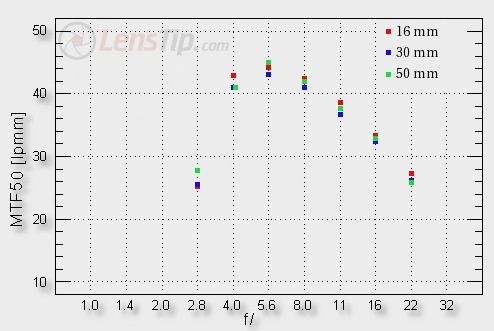
Please Support UsIf you enjoy our reviews and articles, and you want us to continue our work please, support our website by donating through PayPal. The funds are going to be used for paying our editorial team, renting servers, and equipping our testing studio; only that way we will be able to continue providing you interesting content for free. |
- - - - - - - - - - - - - - - - - - - - - - - - - - - - - - - - - - - - - - - - - - - - - - - -
Everything would be perfect if only we could forget for a moment about the f/2.8 aperture. The lens at all focal length exceeds significantly the level of 40 lpmm, generating outstandingly sharp pictures. Nothing to carp about here but we must notice at once that none of the Tokina’s rivals fared worse. All this class lenses present excellent results up from f/4 aperture.
Unfortunately for the Tokina we must remind ourselves about the existence of f/2.8 aperture. We don’t have good news for the fans of this company’s products because at that point the Tokina fared the worst of all the lenses, mentioned above. The image by f/2.8 is distinctly “soapy” and there’s one way to get rid of that “soap” – stopping down…
The picture below shows us how the situation looks at the frame edge. The news are again bad for the Tokina – the performance at the maximum aperture is simply outrageous. Even on stopping down to f/4.0 we don’t see a definite improvement and only by using f/5.6 we get a guarantee of very sharp photos. It is true that in this category the Sigma fared equally bad but the Canon and the Tamron coped definitely better at larger apertures. An excellent performance at 50 mm focal length is the Tokina’s evident asset, though – up from f/5.6 the results don’t differ much from those of a high-end “prime”.
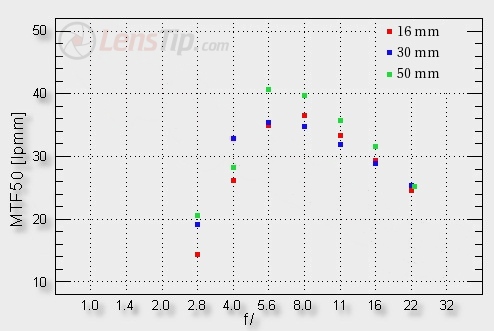
The next picture shows some JPEG files crops which we got using the Nikon’s D200 standard settings with not very aggressive sharpening level.
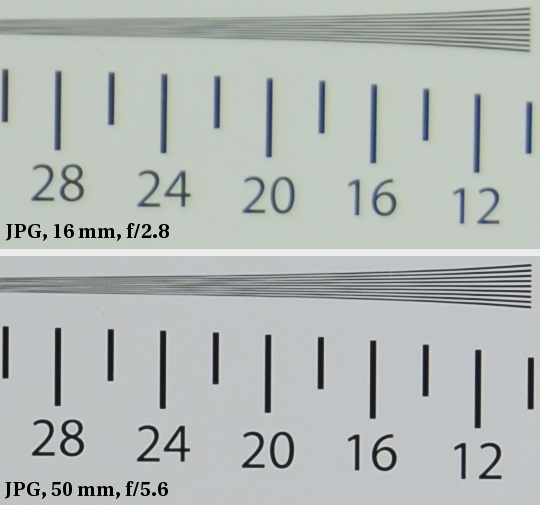
Canon 20D
What does the situation look like on the RAW files from the Canon 20D? To our enormous surprise it looks very different and it is to the tested lens’s advantage. First, let’s check the performance in the frame centre.
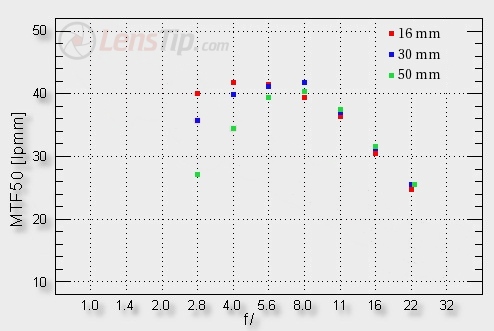
The very difficult focal length of 16 mm is sensational throughout the whole aperture range. The textbook level of 40 lpmm is reached at the maximum aperture and later we see the situation getting even a bit better. The same we observe in the middle of the focal lengths range although by f/2.8 the values differ from the rest a bit; still the sharpness level is very good.
The only serious reservations you can have at the maximum aperture and 50 mm focal length, where the performance is similar to that of the lens specimen tested on the Nikon.
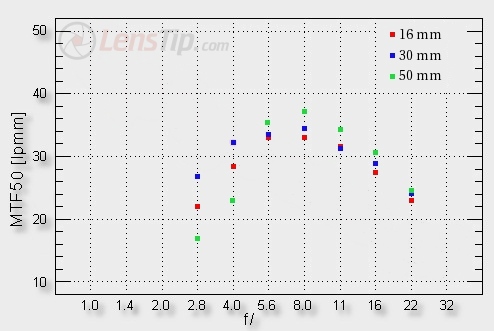
If we look at the results at the frame edge we see a relatively even course from one focal length to the other. Taking into account the difference in size of the 20D and the D200 sensors, the maximum results for both mounts can be deemed comparable with a slight Canon’s advantage at the maximum relative aperture – the Nikon mount version of the lens fared very weakly there.






